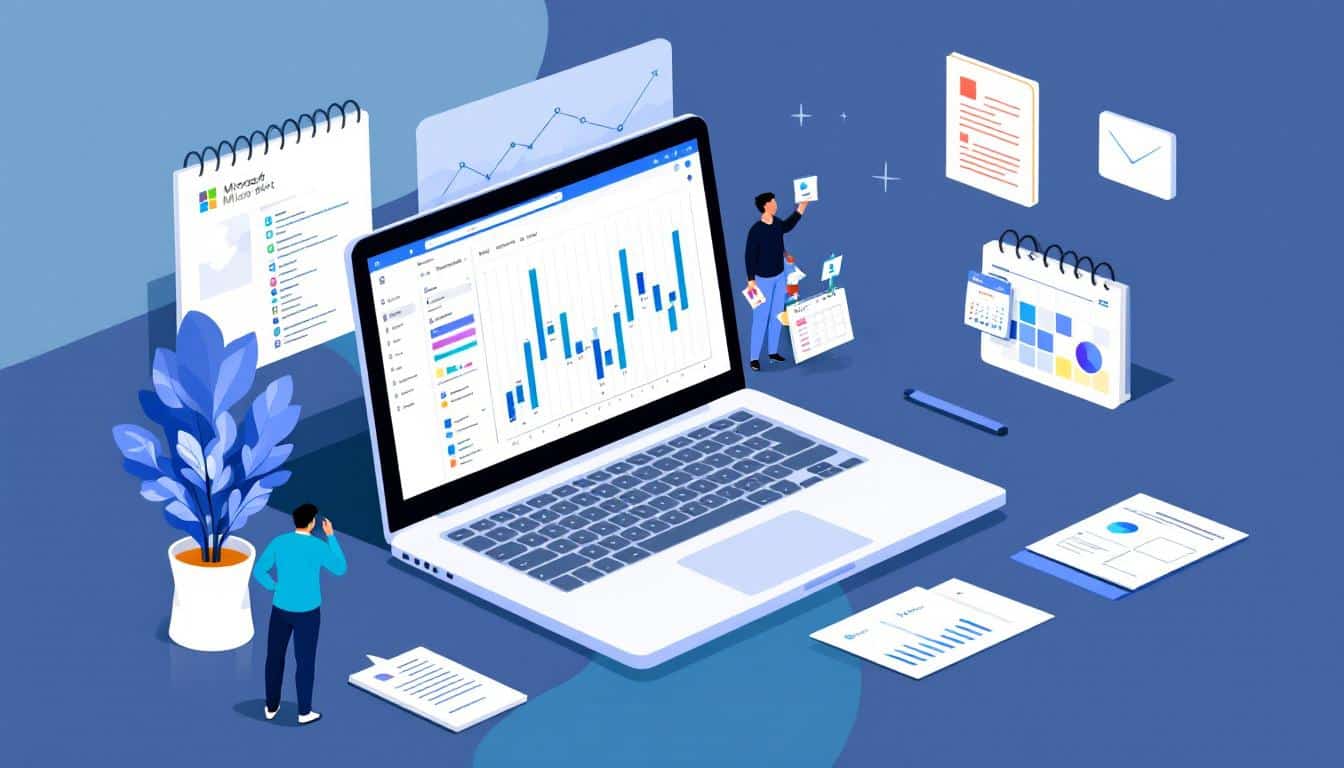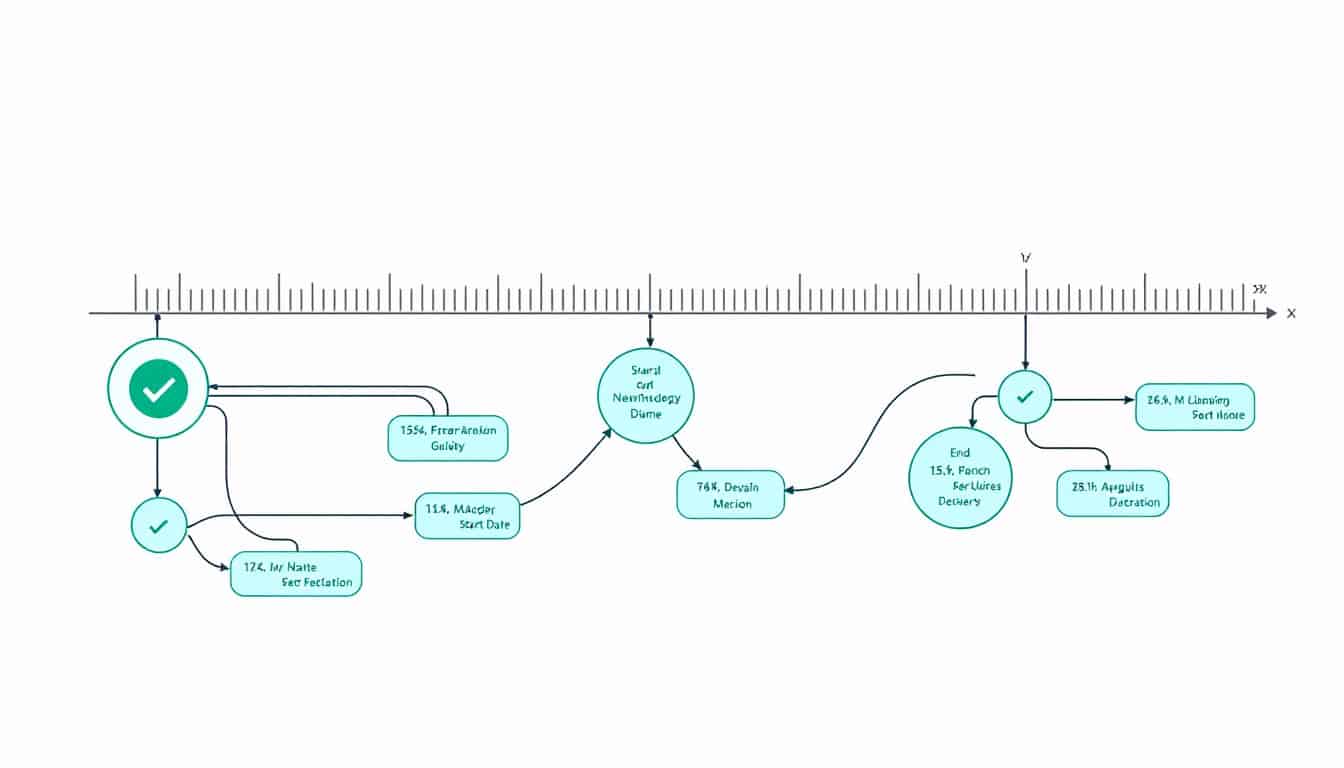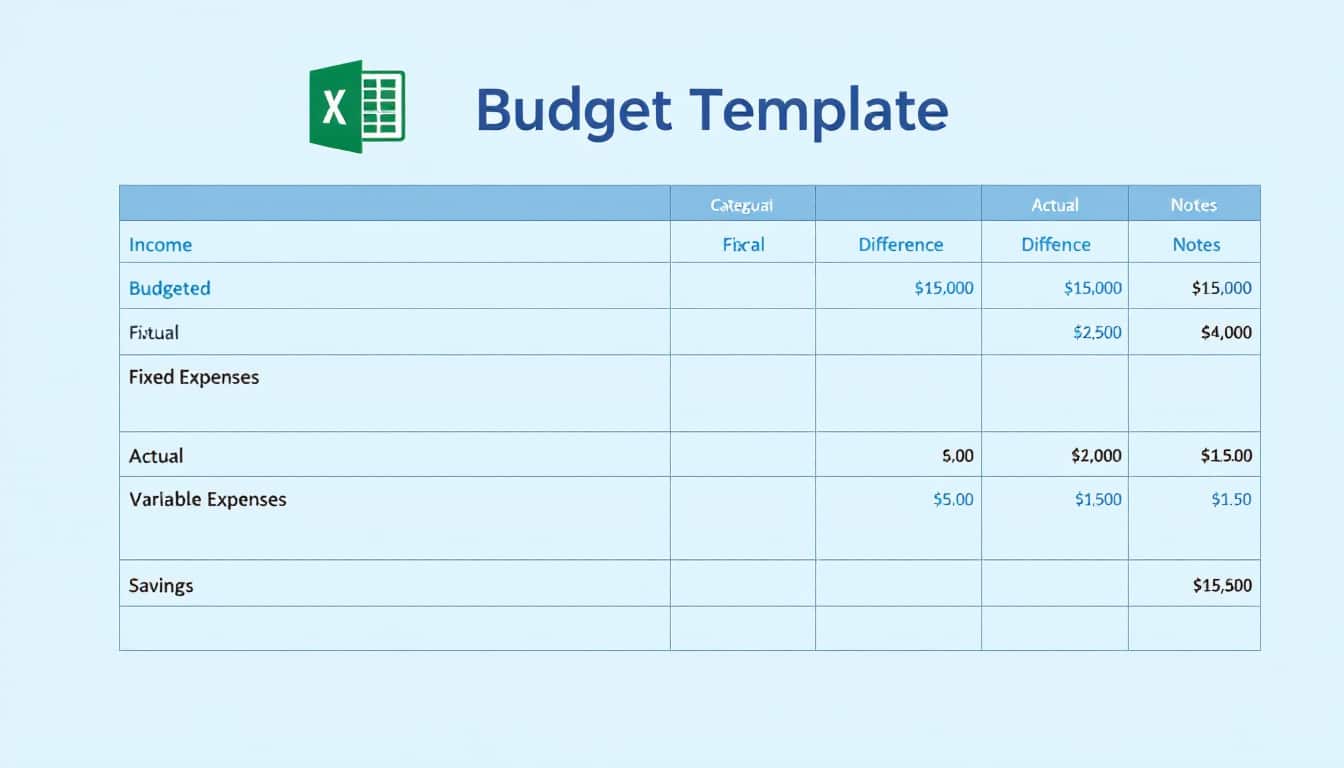“`html
🔥 Nous recommandons Ideamap
Ideamap est l’outil idéal pour un brainstorming ou un projet collaboratif. Grâce son interface facile et à ses fonctions IA, Ideamap booste votre créativité tout en favorisant une meilleure organisation de vos idées pour atteindre vos objectifs.
Managing a project is navigating uncertain terrain. Surprises can arise at any moment, disrupting your established plans. This is where project contingency comes into play.
In an environment where every detail matters, anticipating uncertainties becomes essential. Contingency allows you to stay on course despite unforeseen challenges. It ensures that the project remains aligned with its original objectives. Let’s explore together how to develop and implement an effective contingency plan to ensure the success of your projects.
What is project contingency? Project contingency refers to a reserve of time, money, or resources set aside to address unexpected events or uncertainties that may arise during a project. It serves as a buffer to manage risks, overcome unforeseen challenges, and ensure that the project stays on track despite disruptions.
The purpose of project contingency is to provide a financial or time cushion to manage both identified and unforeseen risks. This allows for covering unexpected expenses without compromising the financial health of the project. Furthermore, it provides extra time to accommodate delays or unplanned tasks. Lastly, it reassures stakeholders that the project is prepared to handle uncertainties.
Whether by applying cost, time, or resource contingency when implementing a contingency plan, project management software will be essential. Indeed, these software tools have Gantt charts that can integrate the initiative into a timeline, add resources, and ensure that delays or unforeseen issues can be managed without disrupting the entire project.
ProjectManager is an award-winning project and portfolio management software with robust Gantt charts capable of planning tasks, resources, and costs. It also links the four types of task dependencies to avoid cost overruns and absorb delays without immediately affecting subsequent tasks.
Here’s how to improve contingency planning with ProjectManager:
- Use the Gantt chart in parallel with the sheet, board, list, and calendar views to manage contingencies.
- Leverage one-click reports and dashboards to monitor data.
- Share contingency plans with stakeholders using free guest licenses.
The Gantt charts from ProjectManager are excellent for project contingency planning. Learn more.
Key elements of project contingency planning Project contingency planning is a crucial process for managing uncertainties and ensuring the success of a project despite unforeseen risks or challenges. By preparing for potential disruptions, project managers can minimize the impact of unexpected events on timelines, budgets, and resources. Here are the key elements that contribute to effective project contingency planning:
Risk identification and analysis Involves recognizing potential risks, assessing their impact, and prioritizing them based on their likelihood and severity. By systematically analyzing risks, project managers can adopt a targeted approach to risk management and establish effective contingency measures to address them before they become major issues.
Risk mitigation plan Outlines the strategies and actions to minimize or eliminate identified risks. This plan focuses on reducing the likelihood that the risks occur or their impact if they do arise. It offers a proactive approach, ensuring that preventive measures are in place and that contingency plans can be executed if necessary.
Project controls Are systems and processes established to monitor and manage project performance. These controls help track progress, compare it with the baseline, and quickly detect any deviations. Effective project controls allow for timely corrective actions, helping to keep the project within the defined scope, budget, and schedule.
Project status reports Provide regular updates on project progress. They highlight key performance indicators (KPIs), risks, issues, and the overall health of the project. These reports help project managers and stakeholders stay informed and make data-driven decisions to address potential problems that arise during the project lifecycle.
Issue log Is a documented record of problems or questions that arise during the project. It tracks the nature, impact, and resolution of these issues, helping the project team address them effectively. An issue log ensures transparency and accountability, providing a structured approach to swiftly resolve problems.
Contingency budget Is a reserve fund set aside to cover unexpected costs or changes in the project scope. This budget ensures that financial resources are available to address unforeseen circumstances, preventing the project from exceeding its allocated budget and maintaining financial control throughout its lifecycle.
Contingency reserve Is a specific allocation in the project budget or schedule to cover anticipated risks. It provides a safety net, ensuring that funds or time are available to manage identified and assessed risks. This reserve allows the project to adapt to changes without affecting its overall objectives.
Management reserve Is an additional fund or time set aside for unforeseen risks that were not initially identified. It acts as a buffer for risks outside the current project risk profile, providing the necessary flexibility to tackle unexpected challenges that may arise unexpectedly during the project.
Schedule compression techniques Such as crashing or fast-tracking, allow for reducing the project schedule in the event of delays or unforeseen circumstances. These methods involve adding resources (crashing) or overlapping tasks (fast-tracking) to make up for lost time, ensuring that the project remains on track despite setbacks.
By integrating these elements into contingency planning, project managers can effectively navigate uncertainties and ensure that their projects stay on track, even in the face of unforeseen challenges.
When to execute a project contingency plan A project contingency plan is crucial for navigating the unexpected during a project. It provides a set of pre-established actions to mitigate risks and manage disruptions that may arise. Knowing when to trigger the contingency plan is essential for ensuring project success, and it should be activated under certain conditions when the project deviates from its initial course.
Scope creep Occurs when the project scope extends beyond the initially agreed parameters without appropriate control or approval. This can lead to additional work, resources, and unexpected costs. When scope creep is identified, executing the contingency plan helps resolve the issue by realigning the project with its original objectives or allocating additional resources and time to accommodate changes.
Budget overruns Occur when the project exceeds its financial resources due to unexpected costs, poor planning, or mismanagement. When a budget overrun occurs, it is essential to activate the contingency plan to assess the impact, identify solutions such as securing additional funds or reducing the project scope, and implement measures to keep the project on track financially. This ensures that the project can continue to progress without compromising its completion.
Project delays Can happen due to unexpected events, such as resource shortages, external factors, or changes in priorities. In the event of delays, executing the contingency plan may involve schedule compression techniques or reallocating resources to recover lost time. It may also require a reassessment of the project timeline to determine whether adjustments are necessary to deliver the project on time. The contingency plan helps project managers minimize the impact of delays and maintain progress toward completion.
Free templates related to project management In line with our commitment, some templates can assist with project contingency. These templates address risk management and action plans to get the project back on track. Here are links to these free templates, which are just a few of the more than 100 project management templates available for instant download from our site. These Excel and Word templates cover all aspects of managing a project.
Contingency plan template Use this contingency plan template as part of the risk management process. It encourages the team to anticipate and develop strategies before issues arise. It is fully customizable and can support projects across various sectors such as IT, manufacturing, construction, and more.
Risk register template Download this free risk register template for Excel to document and track potential risks in a project, including their probability, impact, and proposed mitigation strategies. It assists with project contingency by identifying and prioritizing risks early on, allowing project managers to plan for uncertainties.
Risk assessment template Use this free risk assessment template for Excel to identify, assess, and prioritize potential risks in a project. It aids project contingency by evaluating the severity and likelihood of risks, enabling project managers to develop targeted mitigation strategies.
How ProjectManager helps manage project contingency Templates are useful, but they are not the best way to plan project contingency. Indeed, they are static documents while projects are dynamic. Templates must be updated manually and are poor collaborative tools. It is much better to use project management software, although not all products are created equal.
ProjectManager is an award-winning project and portfolio management software that has contingency planning tools such as Gantt charts, kanban boards, and calendar views that outline tasks, assign responsibilities, and collaborate in real-time. Task lists can be used to detail all elements of a contingency plan, including necessary resources. But that’s not all.
Effectively manage resources While both human and non-human resources can be planned on Gantt charts, during assignment, our software can set team availability, skills, and pay rates. This simplifies the assignment process and ensures the right resources are available at the right time and place. To see resource allocation, check the color-coded workload chart.
It shows who is overloaded or underutilized and can balance the team’s workload from that chart. This keeps everyone productive without risk of burnout. To see a summary of daily or weekly activities, use the team page. It can be filtered by progress and priority, and tasks can be updated from this page.
Benefit from real-time monitoring with dashboards and reports For a comprehensive view of live data, visit real-time project or portfolio dashboards that automatically fill with the project’s unique data. They display easy-to-read graphs and charts showing key project indicators such as time, costs, workload, and more for quick insights and to maintain effective execution of contingency plans.
For more details, use customizable status, variance, workload, timesheet reports, and more. They can also be filtered for a broader view of progress, which can then be shared with stakeholders. Secure timesheets track labor costs to stay on budget.
Content related to project management Project contingency is comparable to risk management and is part of the broader project management process. For those looking to learn more about this subject, here are some recently published blog posts covering everything from budgets to risk responses:
- Budget templates for business and project budgeting
- Managing a project budget with project budgeting software
- The best risk management tools and techniques for project management professionals
- Free risk management templates for Excel
- Responding to risks in project management: key strategies
ProjectManager is an online project and portfolio management software that connects teams whether they are in the office or in the field. They can share files, comment at the task level, and stay informed with email and in-app notifications. Join teams at Avis, Nestlé, and Siemens that use our software to successfully complete projects. Get started today with ProjectManager for free.

Defining unexpected management in a project
In the dynamic world of project management, unexpected events are an unavoidable reality. Whether it’s changes in context, budget constraints, or modifications in client needs, these elements can disrupt the smooth running of a project. Unexpected management involves anticipating, identifying, and effectively reacting to these uncertainties to keep the project on track. This discipline relies on the implementation of preventive and reactive strategies that minimize the impact of unexpected events on defined objectives.
An effective management of unexpected events requires a deep understanding of the various types of potential risks and their likelihood of occurrence. This includes not only technical and financial risks but also risks related to human resources and timelines. By integrating these elements from the very first stages of the project, managers can better prepare to face unexpected challenges and ensure the overall success of the project.
How to identify and analyze risks
Risk identification and analysis are crucial steps in unexpected management. To do this, it is essential to conduct a thorough needs assessment, which helps identify critical aspects of the project and anticipate potential sources of disruption. Once these needs are identified, project managers can use tools like risk management to evaluate the probability and impact of each identified risk.
An effective method is to create a risk register, where each risk is documented with its description, probability, potential impact, and proposed mitigation strategies. This analysis allows for prioritizing risks and focusing efforts on those that pose the greatest threats to the project. Additionally, involving all stakeholders in this process ensures a comprehensive and shared view of the risks, thus facilitating a coordinated and cohesive response when needed.
Developing an effective contingency plan
A well-crafted contingency plan is the cornerstone of unexpected management. It is a strategic document that outlines the actions to take when an identified risk becomes a reality. This plan should be detailed and adaptable, covering various possible scenarios that could affect the project. To create an effective contingency plan, it is essential to follow a structured methodology that includes identifying triggers, defining actions to be taken, and assigning responsibilities within the team.
For example, if a risk related to supply chain delays materializes, the contingency plan might include actions such as activating alternative suppliers, reallocating resources to compensate for the delay, or adjusting the project’s milestones to adapt to the new situation. Furthermore, it is crucial to regularly test the contingency plan through simulations or crisis management exercises to ensure its effectiveness and the team’s responsiveness when needed.
Key elements of a contingency plan
An effective contingency plan must include the following elements:
- Triggers: Specific conditions that indicate that a contingency plan should be activated.
- Actions to take: Detailed measures to respond to the risk or unexpected event.
- Responsibilities: Identification of team members responsible for implementing the actions.
- Necessary resources: Allocation of financial, human, and material resources required to execute the plan.
What role do budget and resources play in unexpected management
Budget and resources are essential elements in managing unexpected events. Considering financial and time leeway allows for addressing unexpected costs without compromising the entire project. A well-structured budget includes a contingency reserve, intended to cover unexpected expenses that may arise during the project.
Moreover, effective management of human and material resources is crucial for responding rapidly to unexpected events. This involves having flexible resources capable of adapting to changes and redistributing tasks based on new priorities. Utilizing project management tools, such as planning systems, facilitates the reallocation of resources and ensures optimal use of the available budget.
Using project management tools to anticipate and manage unexpected events
Project management tools play a crucial role in anticipating and managing unexpected events. Specialized software offers features such as Gantt charts, Kanban boards, and interactive calendars, allowing for clear and real-time visualization of project progress. These tools facilitate the early detection of deviations from the initial plan, allowing for quick intervention to correct the course.
For example, using project portfolio management software allows for centralizing all relevant information and facilitating communication among team members. In addition, these tools often provide advanced reporting features that allow tracking key performance indicators (KPIs) and generating detailed reports for stakeholders. By integrating suitable project management solutions, teams can improve their responsiveness to unexpected events and maintain better control over all aspects of the project.
When to activate a contingency plan to get a project back on track
Knowing when to activate a contingency plan is just as important as developing one. The activation of the plan should occur as soon as indicators show that the project is deviating from its initial objectives. These indicators may include budget overruns, delays in the schedule, or changes in the project scope.
For example, if a key phase of the project is delayed due to unexpected technical issues, it is crucial to immediately activate the planned contingency plan. This may involve reallocating resources, adjusting timelines, or engaging additional resources to catch up on the delay. Similarly, in the event of budget overruns, the contingency plan might include cost reduction measures or seeking additional funding to avoid compromising the project’s financial viability.
Warning signs
Some signs may indicate that it is time to activate the contingency plan:
- Repeated delays in intermediate deadlines.
- Frequent or unexpected budget overruns.
- Major changes in project requirements or objectives.
- Communication problems within the team or with stakeholders.
Optimizing communication for effective unexpected management
Clear and effective communication is crucial for unexpected management. In the event of an issue, it is essential that all stakeholders are promptly informed of changes and actions to be taken. This helps maintain transparency and strengthen trust between team members and stakeholders.
To optimize communication, it is advisable to use real-time collaboration tools and hold regular follow-up meetings. These meetings allow for discussing potential risks, progress made, and necessary adjustments. Furthermore, documenting all decisions and actions in a shared log ensures that everyone has access to the latest information and avoids misunderstandings.
Integrating unexpected management into the project lifecycle
Integrating unexpected management into the project lifecycle helps foster a proactive culture within the team. This involves adopting a systematic approach to identifying, assessing, and managing risks at each stage of the project, from initiation to closure.
Adopting a methodology like Stage-Gate can facilitate this integration by structuring the project into distinct phases with regular checkpoints. At each stage, risks are reassessed and contingency plans adjusted based on new information and progress made. This approach ensures continuous adaptability and better management of unexpected events, thus contributing to the overall success of the project.
Additionally, training team members in unexpected management and encouraging a culture of resilience enhances responsiveness and effectiveness in the face of challenges. A well-prepared team can more easily navigate uncertainties and stay the course despite obstacles encountered.
Measuring the effectiveness of unexpected management
To ensure effective management of unexpected events, it is essential to regularly measure its effectiveness. This involves defining and tracking specific key performance indicators (KPIs), such as the number of unexpected events that occurred, the speed of response, and the impact of the contingency measures implemented.
By using advanced reporting tools, project managers can analyze collected data and identify areas for improvement. For example, an analysis of frequent delays may reveal gaps in initial planning or resource allocation, allowing adjustments to processes for future projects. Similarly, assessing costs related to unexpected events can help refine budgets and better forecast necessary reserves.
Managing unexpected events is a core skill for any project manager aiming to ensure the success of their initiatives. By clearly defining risks, developing robust contingency plans, and using suitable management tools, it is possible to navigate effectively through challenges and keep projects on the path to success. Open communication and a proactive culture further strengthen the team’s capacity to respond to uncertainties, ensuring that objectives are achieved despite the unpredictability.














